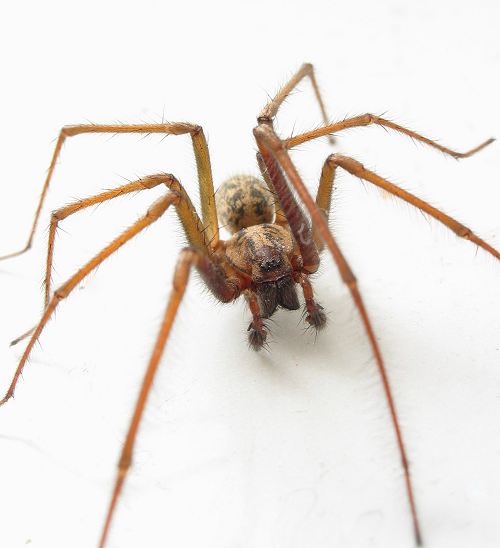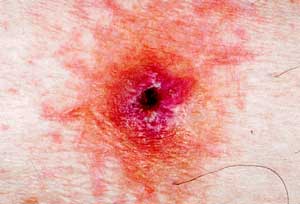Black and Grey House Spiders are common in urban areas, and are sometimes called
Window Spiders. Other Badumna group spiders are found throughout Australia. They
belong to the Family Desidae.
Habitat and Distribution:
Black and Grey House Spiders are widely distributed in southern and eastern Australia.
Their webs form untidy, lacy silk sheets with funnel-like entrances. Black House Spiders
are found on tree trunks, logs, rock walls and buildings (in window frames, wall
crevices, etc). Badumna longinquus may be found in similar locations and often builds
webs on foliage.

Identification:
The Black House Spider (Badumna insignis) is a dark robust spider, with the female
(up to 18mm) being larger than the male (about 9mm). The carapace and legs are dark
brown to black, and the abdomen is charcoal grey with a dorsal pattern of white markings
(sometimes indistinct). B. longinquus (Grey House Spider) is a slightly smaller (14mm)
species with a greyish carapace and grey-brown banded legs.
The webs of Black House Spiders have a 'funnel-like' shape, which is sometimes
misunderstood as a Funnel-web Spider web. However, the two spiders are not at all
similar in appearance, size or life history. See the Funnel-web Spider factsheet
to compare the two spiders. The retreat of a true Funnel-web Spider is often less
funnel-like and is usually a burrow in the ground. Some funnel webs have burrows in
tree-trunk crevices but their web entrances are disguised with detritus (eg, bark)
particles embedded in the silk, whereas the silk of Badumna webs is clean.

Habits, Mating and Reproduction:
The female spider never leaves her web unless forced to, but keeps on repairing it -
old webs can look grey and woolly from constant additions of silk. Males, when ready
to mate, go in search of females in their webs. The male plucks the web of the female
to attract her attention. Once the male has made sure that the female will be receptive,
he can safely approach and inseminate her with his palps. They may then stay together
for several days and may mate again several times.
The female constructs several white silk egg sacs, which are secured within the web
retreat. The female stays with the eggs until they hatch. The spiderlings then disperse.
The spiders mature during summertime and live for about two years.
In the bush, Badumna spiders are found especially upon rough-barked trees which provide
good shelter for their retreats amongst the cracks in the bark. Trees that have been
attacked by wood-boring insects are particularly attractive, as the sap flowing from
the bored holes attracts flies, beetles, butterflies, bees and ants, which the spider
can prey upon easily. In the house, they feed upon household pests attracted to the light
of windows and lamps, where the spiders tend to build their webs. Enemies include the
White-tailed Spider, as well as parasitic wasps and flies.
Bite:
 Black House Spiders are timid animals and bites from them are infrequent. The bite may
be quite painful and cause local swelling. Symptoms such as nausea, vomiting, sweating
and giddiness are occasionally recorded. In a few cases skin lesions (Necrotising Arachnidism)
have developed after multiple bites.
Black House Spiders are timid animals and bites from them are infrequent. The bite may
be quite painful and cause local swelling. Symptoms such as nausea, vomiting, sweating
and giddiness are occasionally recorded. In a few cases skin lesions (Necrotising Arachnidism)
have developed after multiple bites.
 Black House Spiders are timid animals and bites from them are infrequent. The bite may
be quite painful and cause local swelling. Symptoms such as nausea, vomiting, sweating
and giddiness are occasionally recorded. In a few cases skin lesions (Necrotising Arachnidism)
have developed after multiple bites.
Black House Spiders are timid animals and bites from them are infrequent. The bite may
be quite painful and cause local swelling. Symptoms such as nausea, vomiting, sweating
and giddiness are occasionally recorded. In a few cases skin lesions (Necrotising Arachnidism)
have developed after multiple bites. 

